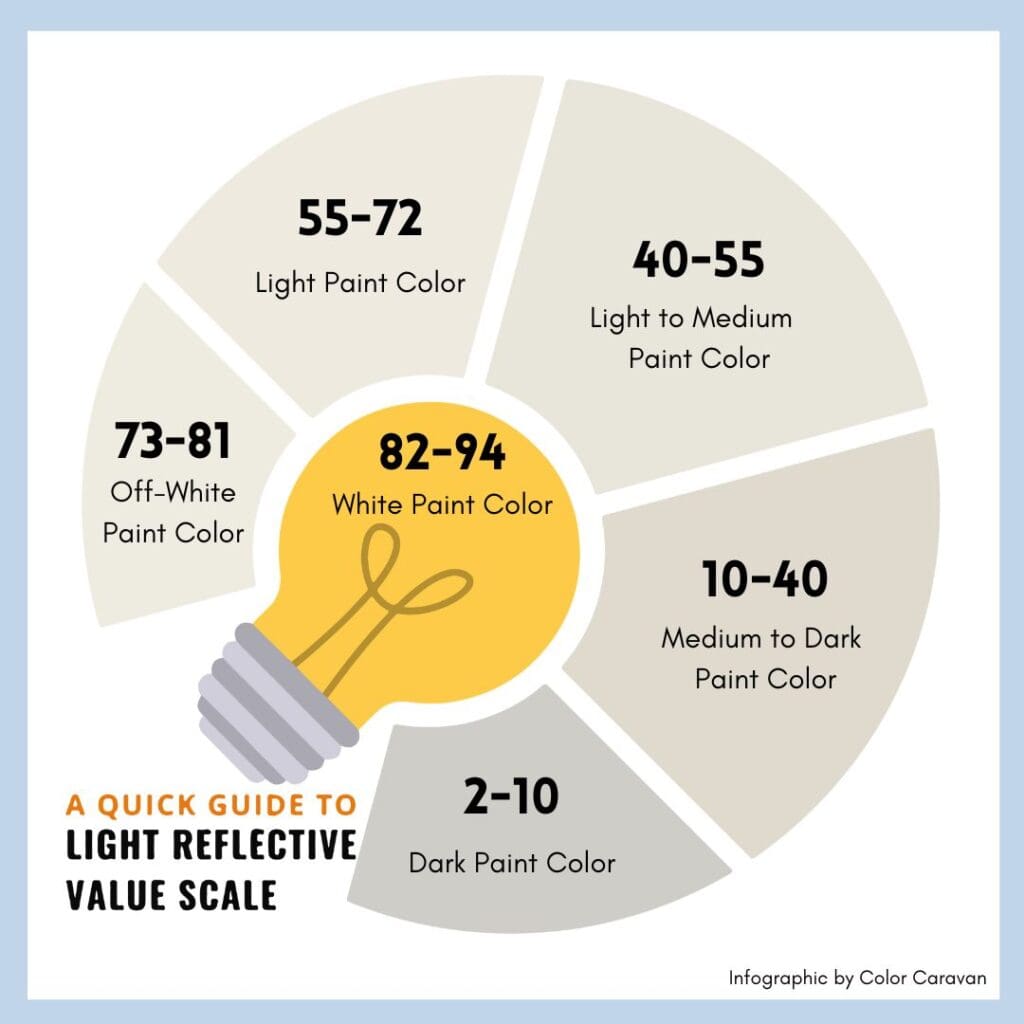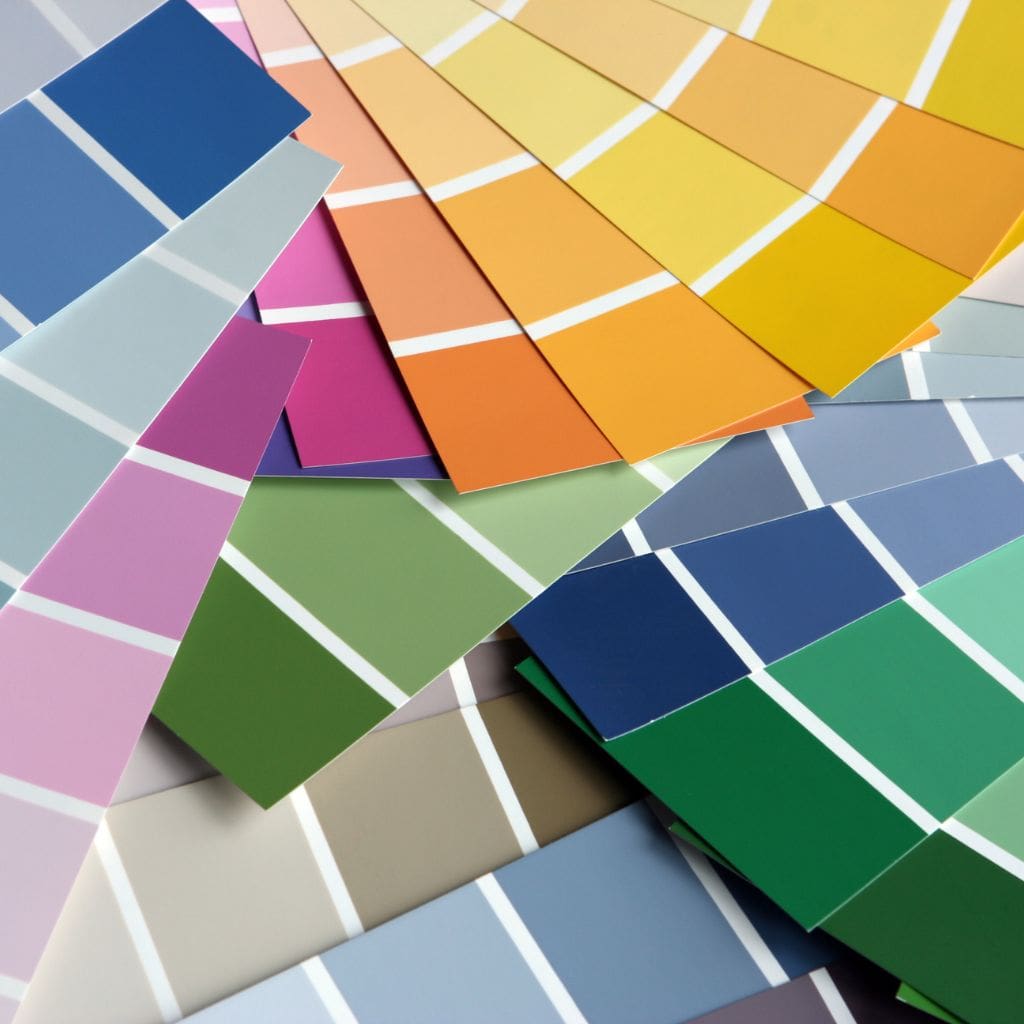Why It’s Important to Know How To Read A Paint Swatch
If you’ve ever thought about painting a room, chances are you’ve stood in front of the rainbow of thousands of paint swatches at the hardware store, and felt a little overwhelmed.
Questions begin to swirl around in your mind, and suddenly you’re walking out of the hardware store with a gallon of paint and a small prayer to the paint gods that you’ve picked the right color.
Not to worry. We’ve all been there. We’re going to walk through the anatomy of a paint swatch so that the next time you need to repaint a room, you can strut into the hardware store armed with information you can use to pick the right color, the first time.
If you want an in-depth guide on how to pick the perfect dining room paint color, check out our post, “Expert Guide To Nailing The Perfect Dining Room Color” for pro tips on figuring out your natural light, paint sheens and more!
How to Read a Paint Swatch
If you’re struggling to find the right color, here’s an easy guide on how to read a paint swatch so you can pick colors like a pro.
Anatomy of A Paint Swatch
A paint swatch is a strip of colors that show a single color formula in all its variations from dark to light. This means that all of the colors on the strip will have the same undertone. We’ll get to undertones and why they’re important next.
Some paint swatches just have a single color by itself. Most paint swatches typically have 7 colors per strip. These seven colors will range from the lightest variation to the darkest variation of the same color formula. Each color on the strip has the color’s name, and its paint number. These paint numbers go in order from lightest to darkest along the strip.
For example, let’s take a Sherwin Williams paint strip. You can see that the darkest color on the strip at the very top of the strip is Iceberg, SW 6798. As the colors get darker the lower you look on the paint strip, the numbers climb higher. This is typical of all paint swatches

Unveiling Paint color Undertones
Every color rests on a spectrum. Colors can have either warm, or cool undertones. Warm undertones mean your color can look more red, pink, yellow, or orange when daylight hits it. Cool undertones mean your color can look more blue, purple, or gray when in shadow.
When selecting paint colors, make sure to look at the surrounding colors on the paint strip. The very bottom color will give you the best idea of what undertone the rest of the colors have. By checking the darkest color on your paint strip, you can see if your color will lean more warm or cool. This is particularly helpful when choosing lighter colors.
North-facing light will be grayer and have a cooling effect on your paint colors. Northern light will pick up on any blue undertones in your paint. They will make blue, grays, greens and some whites bluer, so make sure to color test and lean towards more warmer tones if you have a north-facing light source.
South-facing light sources are warmer and will pick up more orange and yellow undertones in your paint colors. South-facing rooms don’t get a lot of morning light and can feel dim until they brighten in the afternoon. Balance out this extra bump of yellow with a neutral gray or cool tonal base in your paint.
East-facing rooms have inconsistent lighting. They’re more bright and warm in the mornings, and cooler and gray by midday and in the evenings. Balance these rooms out with a warmer bedroom color that can look good in both scenarios.
West-facing rooms typically begin with subtle light in the mornings, and graduate to more intense, warm light by the afternoon. Western lit rooms can handle both cool and warm colors, but less bold, softer tones will work better in the stronger afternoon light.
Just remember that any color will look brighter when in direct sunlight. If you have a room with abundant natural light, (lucky you) look towards more tonal colors than brighter colors your room doesn’t suddenly become harsh or blinding.
What Is LRV and Why Does It Matter?

Let’s take a look at the back of this same Sherwin Williams paint swatch. On the back you can see they have some additional information about each color. Every color will have what’s called an LRV number associated with the color. You can see the LRV noted on the back of the swatch, on the right side.
Not all paint swatches will have the LRV on the swatch itself. Valspar, Kelly Moore, and Behr list the LRV in the fan deck index at the back of the deck. Benjamin Moore lists the LRV on each color’s webpage.

LRV stands for Light Reflectance Value. The Light Reflective Value is a numerical scale system that tells you how much light your color reflects. Pure black is 0, pure white is 100.
The lower your number, the less light your color reflects, and the darker the color will be. The higher the number, the lighter (or brighter) your color is, and the more light it will reflect. In reality, no paint color has an LRV of 100 or 0. The purest white paint color has an LRV of 94, and the blackest black paint has an LRV of 3.
Okay, so why does this number matter, and how do you use it?
If you have a room with minimal natural light, you’ll want to select a color with a higher LRV. This lighter color will make your room look brighter, and simulate a “daytime” feel to the room.
Darker colors, colors with lower LRV numbers, will make the room feel cozy and wrapped in the mood of that color.
LRV can also be used to help with energy efficiency. Colors with a higher LRV will bounce back more light.That means you won’t have to use as many light bulbs or light fixtures to provide adequate lighting for the room. It also means it will use less energy to keep the room air conditioned since lighter colors don’t absorb as much heat from sunlight.
If you or someone in your home has impaired vision, the Americans with Disabilities Act Accessibility Guidelines (ADAAG) recommends paint colors with a 70% LRV or higher for a well-lit space. Generally speaking, a paint color within the range of an LRV of 60-70% will work just fine.
How To Use Your Paint Swatch To Find The Perfect Wall Color
Start by taping color strips to your dining room wall to get a feel for what each color will look like in your space. Now leave the room. That’s right. Walk out of the room for a couple of minutes. Go on, get.
You know when you’re trying to pick a perfume, they’ll have a jar of coffee beans to clear your smell senses? The same goes when looking at paint colors. If you’ve been staring at a hundred paint samples, your eyes will get tired. By walking out of the room, getting a quick snack or something to drink, you are “clearing” your eyes from color strain.
Now walk back into the room. What color immediately draws you first? What colors repel you? Pull off any colors that you don’t like.
How To Sample Your Paint Correctly
Now that you’ve narrowed down your paint color selections, head to the hardware store to pick up some sample paint. Most paint stores offer sample sizes for less than the cost of a regular quart. Ask your paint technician if they can give you a sample size of your paint.
Once you have your sample quarts in hand, march home and pull out a paint brush. Paint a good size paint swatch, I’m talking at least a 12” square, bonus points for bigger swatches if you can, on all four walls.
If you have a wall that gets direct sunlight from a window, paint two swatches on that wall, one in the area of direct sunlight, and one next to it in shadow.
Here is the critical part. You’ll want to check your paint swatches in the morning, the afternoon, and in the evening after sunset when it’s dark outside.
Why?
Morning light is cooler, think more blue or gray, than midday and afternoon sunlight. Midday and afternoon sunlight casts a warmer tone than when it’s dark outside. Your color will change depending on the time of day and amount of light it’s exposed to.
Take time to look at each color closely during these three periods of the day. How does your color change?
If it looks gray, purple, or blue, you have a cool undertone in your paint and need to adjust to a color with a slightly warmer undertone. If your color looks red, pink, yellow, or orange, you have a warm undertone in your paint and need to modify it to a color with a slightly cooler undertone. If your color looks great on all four walls, at all three times of day, congratulations, you’ve found your perfect wall color!
Conclusion
Now that you understand how to read a paint strip, and the information included, you can confidently walk into your local hardware store and pick your perfect wall color.
If you are still struggling with color correcting tricky lighting, ask your paint technician for help in getting that last bit just right. If you’re wondering what paint sheen is best, check out our post on paint sheens that will tell you what sheen is best for your lighting and wall texture.







